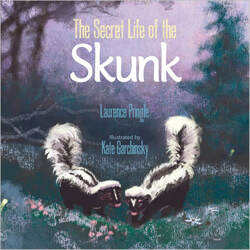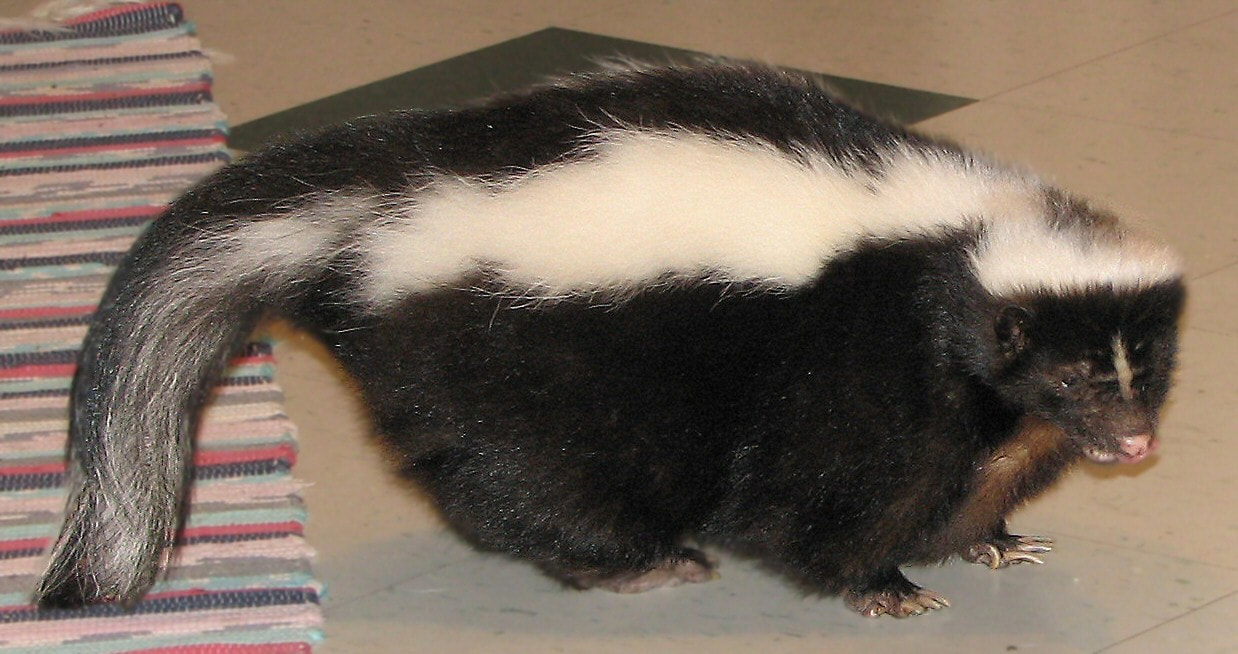 Are skunks aggressive, dangerous animals? Or are they peaceful animals that try to avoid trouble? Well, biologists who study skunks think of them this way: if life were a sport, skunks would be known for their strong defense and for playing fair. Skunk stinkiness comes from a chemical weapon called musk. Foxes, weasels, and some other mammals also produce musk, but skunk musk is especially strong and long-lasting. And only skunks use musk to defend themselves from attack. Picture a skunk ambling along in the night, looking for food. It digs in the soil to get tasty earthworms and beetle grubs. The black and white fur that comes with just being a skunk sends a warning. This color pattern is unusual among mammals. It signals: "Beware, don't mess with me!" Suppose a coyote or other predator ignores this first warning. It steps toward the skunk. When a skunk feels threatened, it faces the danger. It raises its tail and tries to look as big as possible. It stamps its feet and clicks its teeth together. It may growl or hiss. Oh, oh! Despite all of these warnings, the coyote growls and comes closer. Now the skunk gets really serious. It twists its body into a U-shape, so it can see the coyote and also aim its rear end toward it. The skunk's tail arches over its back, away from its rear—the final warning. This gives the skunk a clear shot, and also protects its own fur from the stinky musk. Skunks try to avoid smelling bad! From two grape-sized glands, a skunk can spray musk as a fine mist, or squirt a stream. It can squirt accurately for about 12 feet (3.7m), and hit an attacking animal right in the face. The musk stings the predator's eyes, and can blur its vision for a while. And it stinks! Animals hit with this musk learn to never bother a skunk again. A skunk's glands store enough musk to fire a half dozen shots but then need a week or so to produce more. This is seldom a problem, since a skunk sprays only when its life seems to be in danger. Some skunks can go for months or even years without spraying musk. That's fine with them. Skunks want to avoid trouble, and "play fair" with their many warnings.  A skunks’s stripes point to where the spray comes out. A 2011 study found that animal species that choose fight over flight when faced with a predator often have markings that draw attention to their best weapon. So while a badger has stripes on his face to highlight his sharp teeth, skunks’ stripes are perfectly positioned to highlight their ability to spray potential threats. By http://www.birdphotos.com via Wikimedia Commons  Larry Pringle has written many animal books, among them The Secret Life of the Red Fox. His The Secret Life of the Skunk was published by Boyds Mills Press in 2019. It is about spring and summer in the lives of a mother striped skunk and her kits.
0 Comments
Leave a Reply. |
Traffic for our summer Minutes are ticking up.. |



 RSS Feed
RSS Feed
